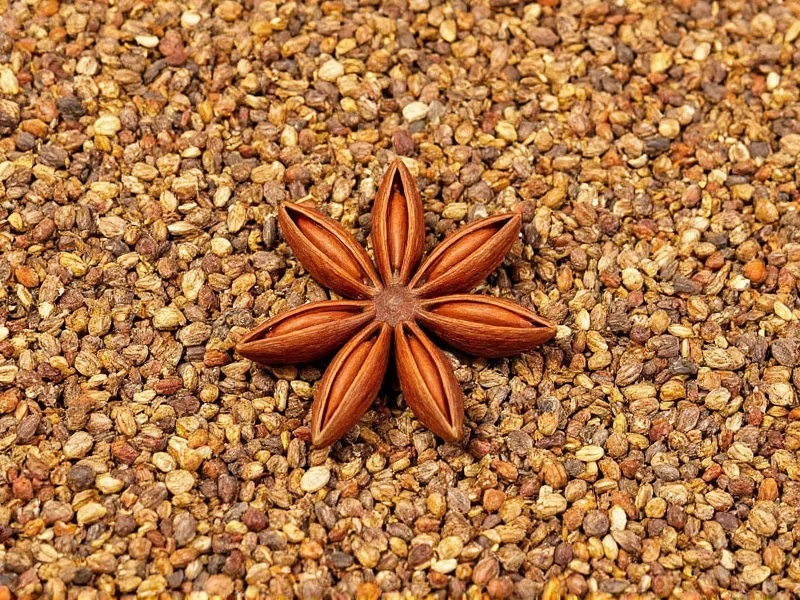Ground anise seed transforms the distinctive licorice flavor of anise seeds into a convenient spice form that integrates seamlessly into recipes. Unlike whole seeds which require grinding before use, the pre-ground version delivers immediate aromatic intensity that permeates dishes more evenly. This difference in texture and flavor release makes ground anise particularly valuable for bakers and beverage makers who need consistent flavor distribution.
Understanding Ground Anise Seed Characteristics
The fine powder form of ground anise seed releases its essential oils more readily than whole seeds, creating a more pronounced flavor profile in finished dishes. This increased surface area means ground anise can sometimes taste slightly more bitter if used excessively, requiring careful measurement. Professional chefs often prefer grinding seeds fresh for critical applications, but quality pre-ground anise maintains excellent flavor for most home cooking needs.
| Characteristic | Ground Anise Seed | Whole Anise Seed |
|---|---|---|
| Flavor Release | Immediate and intense | Gradual, requires crushing |
| Shelf Life | 6-12 months | 2-3 years |
| Best Uses | Baking, sauces, spice blends | Infusions, pickling, garnishes |
| Flavor Intensity | Stronger (use less) | Milder (use more) |
Culinary Applications of Ground Anise Seed
When incorporating ground anise seed into baking recipes, particularly for anise seed ground vs whole applications, add it during the dry ingredient mixing stage for even distribution. This spice shines in traditional European baked goods like Italian pizzelle, German springerle, and Greek breads. For optimal flavor in ground anise seed recipes, pair it with complementary spices such as cinnamon, cloves, and cardamom.
Chefs preparing Middle Eastern and Mediterranean dishes often use ground anise seed in meat rubs and stews, where its sweet warmth balances savory elements. The spice works particularly well with lamb, pork, and root vegetables. When making homemade sausage, adding 1-2 teaspoons of ground anise seed per pound of meat creates a distinctive flavor profile that elevates ordinary recipes.
Substitution Guidance for Ground Anise Seed
Understanding ground anise seed substitute options becomes essential when this specialty spice isn't available. Star anise provides the closest flavor match but requires adjustment—use 1/2 teaspoon ground star anise for every teaspoon of ground anise seed. Fennel seed offers a milder alternative with similar licorice notes, while anise extract delivers concentrated flavor (1/4 teaspoon extract equals 1 teaspoon ground seed).
For those exploring ground anise seed vs star anise differences, note that star anise has a more intense, slightly woody flavor compared to the sweeter profile of true anise seed. When substituting in baking applications, consider reducing sugar content by 10-15% to balance the stronger flavor of star anise.
Storage Recommendations for Maximum Freshness
Proper storage significantly extends the shelf life of ground anise seed. Keep your spice in an airtight container away from light, heat, and moisture—ideally in a cool, dark cupboard rather than near the stove. Ground spices lose potency faster than whole seeds, so check your ground anise seed for freshness by rubbing a small amount between your fingers and smelling; if the aroma is weak, it's time for replacement.
For extended storage, consider dividing your supply into smaller portions and keeping the majority in the freezer. This ground anise seed storage method preserves volatile oils that deliver flavor, maintaining quality for up to 18 months compared to the typical 6-12 month shelf life at room temperature.
Nutritional Profile and Potential Health Benefits
Ground anise seed contains valuable compounds including anethole, the primary component responsible for its distinctive flavor and potential health properties. Research suggests anise seed may support digestive health, with traditional uses including relief from bloating and gas. The spice also contains manganese, iron, and calcium, though these are present in small amounts due to typical usage quantities.
When evaluating health benefits of ground anise seed, note that most studies use concentrated extracts rather than culinary amounts. While enjoying anise-flavored foods contributes to a diverse, plant-rich diet, don't expect significant therapeutic effects from normal cooking usage. Those interested in medicinal applications should consult healthcare professionals about appropriate forms and dosages.
Popular Recipes Featuring Ground Anise Seed
For those exploring how to use ground anise in baking, try adding 1 teaspoon to cookie dough for a sophisticated flavor twist. It pairs exceptionally well with chocolate in brownies and cakes, creating a complex flavor profile that elevates simple recipes. In savory applications, a pinch of ground anise seed enhances tomato-based sauces and braises, adding depth without overpowering other ingredients.
Home beverage enthusiasts can create authentic anise-flavored drinks by adding 1/4 teaspoon ground anise seed to hot chocolate or coffee. For traditional Mediterranean anise tea, steep 1/2 teaspoon ground anise in 8 ounces of hot water for 5 minutes, then strain and sweeten to taste. This simple preparation showcases the pure flavor of ground anise seed without competing ingredients.











 浙公网安备
33010002000092号
浙公网安备
33010002000092号 浙B2-20120091-4
浙B2-20120091-4